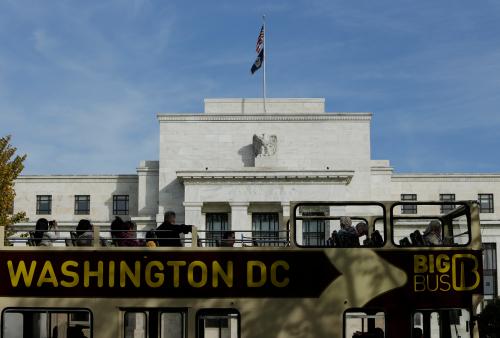Ten years after the worst moments of the global financial crisis, three former central bankers addressed current threats to financial stability at the Hutchins Center on Fiscal and Monetary Policy at Brookings in mid-September – Janet Yellen, the former chair of the Federal Reserve and now a Distinguished Fellow in Residence at the Hutchins Center; Lucrezia Reichlin of the London Business School, former research director of the European Central Bank, and Raghuram Rajan of the University of Chicago, a former governor of the Reserve Bank of India and a former chief economist of the International Monetary Fund. (You can watch the full 60-minute video here).
Yellen discusses the relationship between low interest rates and financial stability
The former Fed Chair argues that there isn’t necessarily a very tight connection between low interest rates and unstable financial conditions. She notes that regulation, not interest rates, should be the Fed’s main tool to address concerns in banking and financial markets.
Yellen says that the Fed lacks regulatory tools
Yellen argues that the Fed lacks many of the necessary regulatory tools to prevent excesses in financial markets.
Reichlin says that European banks are better capitalized
Reichlin notes that since the ECB began regulating banks under the Single Supervisory Mechanism in 2013, banks have become better capitalized and more able to withstand an adverse economic shock.
Rajan warns of the impact of another financial crisis
Rajan warns that another financial crisis would be catastrophic, affecting the public’s faith in capitalism and causing significant political backlash.
Rajan argues that regulators should preemptively stem excessive debt and potentially use monetary policy as a tool
Rajan argues that regulatory and supervisory tools should be used actively and preemptively to prevent leverage in the financial system from becoming too high. Having argued prior to the financial crisis that low interest rates could lead to asset bubbles, Rajan now says that monetary policy should also be part of the conversation when thinking about financial stability.







Commentary
Global financial stability risks: A conversation with Yellen, Reichlin, and Rajan
October 18, 2018